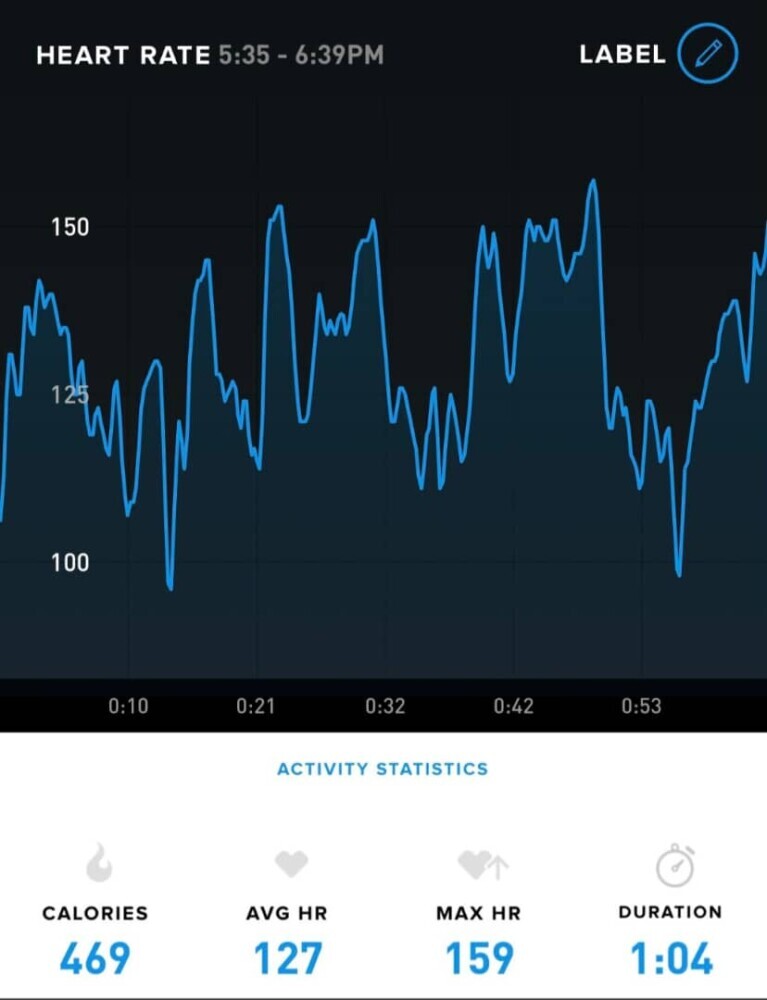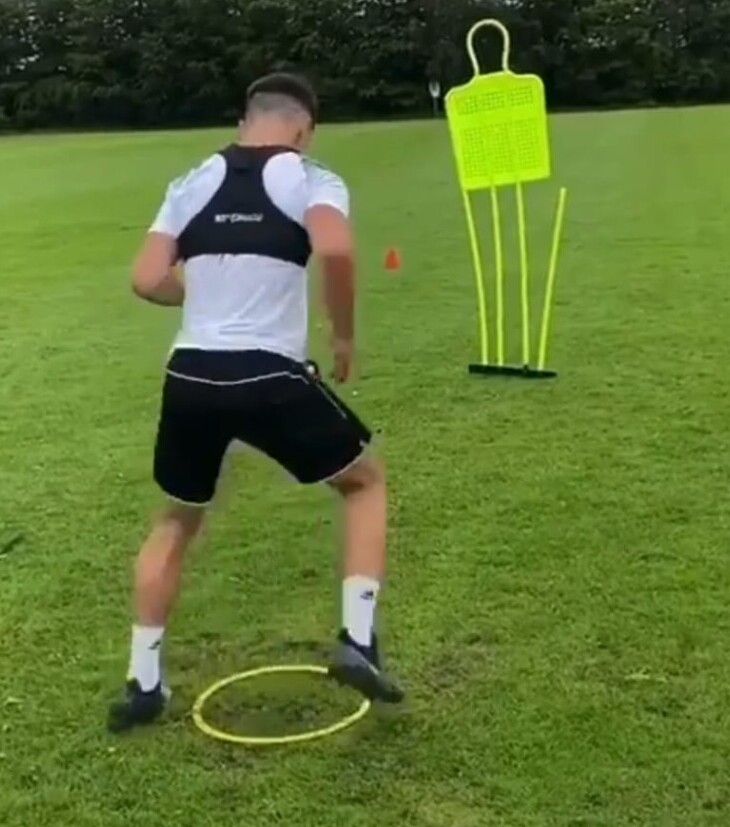In soccer, technical execution is what separates a good player from a great one.
The way you dribble, shoot, or pass can make or break a game. It’s a combo of precision, agility, and knowing when to perform the right move at the right time.
Wearables are shaking up the game by taking player analysis to a whole new level. These gadgets can track movements, provide real-time feedback, and help you fine-tune your skills down to the smallest detail.
Think GPS trackers, accelerometers, and gyroscopes, all strapped to your body, collecting data like your own personal coach.
Why should you care?
Well, because wearables don’t just give you basic stats. They provide insights that are tailored to your unique playing style.
This means you can work on specific areas where you need to improve, whether it’s precision in passing or power in your shots.
Wearables are changing the way we train and play soccer.
And guess what?
They’re not just for the pros anymore. Amateur players can also benefit from these high-tech tools, making it easier than ever to bring your game to the next level.
Understanding Technical Execution in Soccer
Technical execution in soccer is all about performing core skills like dribbling, shooting, and passing with precision and control. It’s the foundation of a solid game and a big differentiator among players.
Dribbling is your ability to maneuver the ball around opponents with finesse. You want tight, controlled touches to keep the ball close, making it hard for defenders to steal.
Practice is key here.
Shooting demands both power and accuracy. Whether you’re going for a long-range shot or a close-range finish, your technique needs to be on point. Focus on body positioning and follow-through.
Passing is more than just getting the ball to a teammate. It’s about timing, accuracy, and weight.
A well-executed pass can break through defenses and set up scoring opportunities. Work on various passes, like short, long, and through balls, to keep your game dynamic.
Proper technique in these areas not only boosts your performance but also reduces the risk of injury.
Bad habits can lead to mistakes and unnecessary stress on your body, so it’s crucial to nail down the basics early on.
Good technical skills give you the confidence to make quick decisions on the field.
You’re not second-guessing your abilities, allowing you to focus on strategy and outsmarting opponents.
Wearables: The Game-Changer in Analyzing Technical Execution
Wearables have revolutionized how players and coaches approach training. These small, high-tech gadgets collect detailed data that’s impossible to gather with the naked eye.
GPS trackers, commonly attached to a player’s vest or waistband, monitor your position on the field. They track distance covered, speed, and even your positioning during key game moments.
Accelerometers and gyroscopes go a step further, measuring your movements in all directions.
These sensors capture data about your acceleration, deceleration, and changes in body orientation. Ever wondered how balanced your footwork is?
These tools can tell you.
These devices gather metrics that break down your activities into actionable insights.
They track kinematics (your motion patterns) and kinetics (forces acting during movements), revealing areas for improvement in your technical execution.
Imagine having real-time data showing you’re not pivoting your hips correctly when taking a shot.
Wearables can make that possible. It’s like having a precise, data-driven coach in your pocket, ready to provide feedback whenever you need it.
The technology behind these wearables has advanced so much that they’re incredibly accurate and user-friendly.
Some devices even sync with apps on your phone, allowing you to review your performance anytime, anywhere.
The Benefits and Impact of Using Wearables in Soccer
Wearables offer personalized feedback that’s tailored just for you. This direct insight helps you focus on your unique strengths and areas for improvement.
Instead of generic tips, you get actionable data, making your training sessions way more effective.
Enhanced technique and efficiency come as a natural result of using wearables. By constantly monitoring your performance, you can make small adjustments that lead to significant improvements.
Whether it’s refining your dribble or perfecting your pass, these tweaks can enhance your overall game.
Injury prevention is another huge plus. Wearables track not just performance but also physical strain.
They alert you to any unusual activity patterns that might indicate potential injuries. This means you can address issues before they turn into serious problems, keeping you on the field longer.
The role of wearables in rehabilitation cannot be overstated. If you do get injured, these devices help monitor your progress and ensure you’re on track for recovery.
They provide data on how well you’re healing and if you’re ready to ramp up your training intensity.
Competitive advantage is what every player aims for. By using advanced technology to monitor and improve your skills, you stay ahead of the curve.
Real-world examples abound, from top-tier teams to amateur leagues, showcasing how wearables are making a tangible difference in performance.
Case studies have shown impressive results, like players reducing their recovery time by half or improving their sprint speed substantially.
The Role of Coaches and Trainers
Wearables provide coaches and trainers with a wealth of data that can be used to tailor training programs to individual needs. By tracking metrics such as heart rate, movement patterns, and exertion levels, coaches can gain a deeper understanding of each player’s physical condition and performance. This data allows for personalized training regimens that address specific areas for improvement.
Coaches can use wearables to monitor players’ responses to different drills and adjust sessions in real-time. For example, if a player is consistently performing at a high intensity, the coach can modify the drill to avoid overtraining. Additionally, wearables can help in designing drills that target particular technical skills, ensuring that players receive focused and effective training.
During matches, coaches can use wearables to analyze players’ positioning and movement. This information can be used to make tactical adjustments and provide post-match feedback that is both data-driven and actionable. By understanding how players move and perform under game conditions, coaches can develop strategies that leverage their team’s strengths and address weaknesses.
Wearable Data Analysis
Wearables collect various types of data, including distance covered, speed, acceleration, heart rate, and more.
To effectively use this data, it’s important to understand what each metric represents and how it impacts performance.
For instance, high acceleration and speed data can indicate effective bursts of effort, while heart rate metrics help monitor player fitness levels and recovery.

To make the most of wearable data, analyze it in the context of training and match performance.
Look for patterns and trends, such as whether certain drills consistently lead to improved metrics.
For example, if players’ acceleration improves after specific agility drills, it suggests those drills are effective in enhancing speed.
Use data to set specific, measurable goals for players and track progress over time.
Wearable data can inform decision-making in various areas, including training intensity, recovery protocols, and injury prevention.
By comparing performance metrics before and after a particular training regimen, you can assess its effectiveness and make informed adjustments.
This approach ensures that training is both efficient and aligned with players’ needs.
Integrating Wearables into Training
Select wearables that align with your training goals. For technical execution, choose devices that measure movement precision, body position, and performance metrics.
Ensure the wearable is comfortable and does not hinder movement, as this will ensure players can focus on their technique without distraction.
Integrate wearables into existing drills to enhance their effectiveness.
For example, use wearables to monitor players’ movement and provide feedback during dribbling drills.
You can set specific targets, such as maintaining a certain speed or heart rate, to challenge players and track their progress.
Incorporate wearable data into technical drills to focus on areas like footwork, agility, and spatial awareness.
Use data from wearables to design custom training programs that address individual needs.
For instance, if a player struggles with endurance, include drills that focus on increasing stamina and monitor progress using wearable data.
By tailoring training programs based on objective data, you ensure that players receive targeted and effective practice.
Conclusion
Wearable technology is a powerful tool for mastering technical execution in soccer.
By understanding the role of coaches, analyzing data effectively, integrating wearables into training, and learning from player testimonials, you can leverage this technology to enhance your game.
Embrace the insights provided by wearables to fine-tune your skills, improve performance, and achieve your soccer goals.
Whether you’re a player looking to elevate your game or a coach seeking to optimize training, wearables offer a data-driven approach to achieving success on the field.
I would love to hear from you. Lets hear your experience both positives and negatives. Leave your message in the comment section below.
Happy training.


2 Responses
The insights that you have shared on how wearables can enhance technical execution in soccer are fascinating! It’s incredible to see how technology is revolutionizing training and performance.
Personally, I’ve found that using similar tech has helped me fine-tune my skills and track progress more effectively.
What specific features or data from wearables do you find most beneficial for improving technique? Also, have you encountered any challenges or limitations with these devices in your training?
Excited to hear how others are integrating tech into their soccer routines!
Thank you Marlinda Davis for your enthusiastic feedback!
I’m glad you found the insights on how wearables can enhance technical execution in soccer fascinating. It’s truly amazing how technology is transforming the way we train and improve our skills on the field.
Specific Features or Data from Wearables:
Personally, I find several features and data points from wearables particularly beneficial for improving technique:
Movement Tracking: The ability to track and analyze movement patterns, such as acceleration, deceleration, and changes in direction, is invaluable. This data helps players refine their footwork, agility, and overall movement efficiency.Heart Rate Monitoring: Monitoring heart rate during training sessions allows players to understand their exertion levels and manage their energy more effectively. It’s crucial for maintaining optimal performance throughout a match.Distance Covered and Speed: Knowing how much distance you cover during a game, along with your top speeds, can help you tailor your conditioning work to ensure you’re match-ready.Kick Power and Ball Contact Analysis: Some wearables provide insights into kick power and the contact point on the ball, which is fantastic for fine-tuning shooting and passing techniques.Positional Data: For players working on their tactical awareness, wearable devices can provide heatmaps of where they spend most of their time on the pitch, helping to analyze and improve positioning.
Challenges or Limitations:
While wearables offer numerous benefits, there are also some challenges and limitations to be aware of:
Data Overload: With so much data available, it can sometimes be overwhelming to analyze everything. It’s important to focus on the most relevant metrics to avoid getting bogged down.Accuracy: While wearable technology has advanced significantly, there can still be occasional inaccuracies in the data, especially with more nuanced movements or in high-intensity situations.Cost: High-quality wearables can be quite expensive, which might be a barrier for some players or teams. Finding a balance between cost and the features you need is essential.Integration with Training: It’s crucial to ensure that the use of wearables doesn’t disrupt the natural flow of training. The technology should complement, not complicate, your routine.
It’s great to hear that you’re already using similar tech to fine-tune your skills and track progress!
I’d love to hear more about your experiences and how you’re integrating technology into your soccer routine.
What features have you found most useful? Have you faced any specific challenges?
Thanks again for your comment